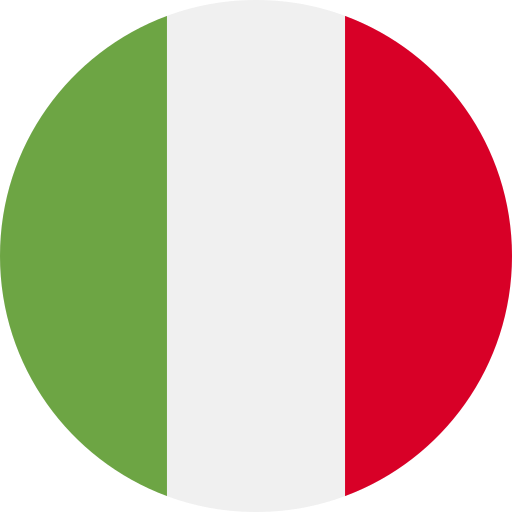Italian holds a unique place among the Romance languages, often celebrated for its melodic quality and rich cultural heritage. As I delve into its position within this family of languages, it’s fascinating to see how Italian not only shares roots with Latin but also reflects the evolution of linguistic trends across centuries.
From the poetic verses of Dante to modern-day conversations, Italian showcases a blend of influences that set it apart from its relatives like Spanish and French. Understanding its distinct characteristics provides valuable insights into both historical developments and contemporary usage in Italy and beyond. Join me as I explore what makes Italian special in the realm of Latin languages.
Overview of Latin Languages
Latin languages, also known as Romance languages, originated from Vulgar Latin. These languages evolved in various regions of the Roman Empire, reflecting distinct cultural and historical influences. Key members include:
- Spanish: Spoken by over 460 million people globally, Spanish has significant variations across countries.
- Portuguese: With around 250 million speakers, Portuguese is prominent in Brazil and Portugal, influencing local dialects.
- French: This language boasts approximately 280 million speakers and showcases regional dialects across Europe and Africa.
- Romanian: Romanian features about 24 million speakers and retains elements from both Latin and Slavic languages.
Italian stands among these languages with unique characteristics that set it apart. The melodic quality of Italian derives from its phonetic clarity, making it particularly appealing for music and poetry. This distinctiveness traces back to its roots in the Tuscan dialect, which played a crucial role during the Renaissance.
The historical evolution of each language results in notable grammatical structures and vocabulary differences. For instance, while Spanish maintains a more straightforward verb conjugation system compared to Italian’s complexity, French incorporates numerous silent letters that influence pronunciation.
Overall, understanding these relationships enhances appreciation for the Italian language’s place within this diverse linguistic family. Each Romance language contributes to a rich tapestry that illustrates the development of communication throughout history.
Historical Context of Italian
Italian emerges from a rich historical backdrop, deeply rooted in Latin. This section focuses on the language’s Latin origins and its evolution over time.
Influence of Latin Roots
Latin serves as the foundational element of Italian. The transition from Vulgar Latin to early forms of Italian occurred across various regions, particularly in Tuscany. Key aspects include vocabulary derived directly from Latin, with around 80% of modern Italian words tracing back to it. Additionally, the phonetic structure reflects Latin’s influence, showcasing similarities in pronunciation and grammatical patterns that distinguish it from other Romance languages.
Evolution of the Italian Language
The development of Italian unfolds through several significant stages. It began with early dialects during the Middle Ages and gained prominence during the Renaissance due to literary works by figures like Dante Alighieri and Petrarch. Standardization efforts emerged in the 19th century, driven by unification movements that promoted a unified linguistic identity. The Tuscan dialect became the basis for standard Italian, emphasizing clarity and melodic quality while influencing regional variations across Italy today. Through these changes, I see how historical events shaped not just language but culture as well.
Comparison with Other Latin Languages
Italian shares many similarities with other Romance languages, particularly Spanish and French. Understanding these connections enhances the appreciation of Italian within the broader context of Latin languages.
Similarities with Spanish and French
- Lexical Similarity: Italian, Spanish, and French exhibit a high degree of lexical similarity. Approximately 75% of vocabulary in these languages derives from Latin roots. For example, the word for “house” is “casa” in Italian and Spanish, while it’s “maison” in French.
- Phonetic Features: All three languages feature phonetic characteristics rooted in their Latin origins. This includes vowel sounds that remain consistent across words, creating a melodious quality often noted in Italian and recognized similarly in Spanish.
- Cultural Influences: Historical interactions among Italy, Spain, and France have led to shared cultural elements reflected in language use. Terms related to art, cuisine, and architecture show significant overlap due to centuries of cross-cultural exchange.
- Verb Conjugation: Italian verb conjugation exhibits more complexity than both Spanish and French. While all three languages employ regular and irregular verbs, Italian has additional moods such as the subjunctive that influence sentence structure more prominently.
- Articles Usage: In contrast to Spanish’s definite articles (“el,” “la”) or French’s (“le,” “la”), Italian features forms like “il,” “la,” which align closely but differ based on phonetic contexts.
- Vocabulary Distinctions: Despite similar roots, each language developed distinct vocabulary over time. For instance, “car” translates to “auto” in Italian but “coche” in Spanish and “voiture” in French. These variances highlight regional adaptations influenced by local cultures.
This comparison underscores how Italian maintains its unique identity while sharing commonalities with its Romance language counterparts.
Cultural Impact of Italian Language
Italian plays a significant role in shaping art, literature, and contemporary culture. Its influence extends beyond borders, affecting various fields globally.
Role in Art and Literature
Italian serves as the language of many artistic movements and literary masterpieces. Renowned figures like Dante Alighieri and Petrarch shaped Western literature through their poetic works written in Italian. The Renaissance period saw an explosion of creativity, with artists such as Michelangelo and Leonardo da Vinci contributing to a cultural legacy that is still celebrated today. Many art terms derive from Italian, reflecting its dominance in the visual arts. For example, “fresco,” referring to a technique of mural painting on wet plaster, originates from the Italian word for fresh. Additionally, opera thrives in Italian, with compositions by Verdi and Puccini setting standards for musical storytelling.
Italian in Modern Context
In modern times, Italian remains influential across various sectors including fashion, culinary arts, and design. Major fashion houses such as Gucci and Prada originate from Italy; their terminology enriches global fashion discourse. The culinary world also embraces Italian vocabulary; terms like “pasta” and “risotto” are universally recognized. Furthermore, approximately 85 million people speak Italian worldwide today; this demographic includes both native speakers and learners drawn to its cultural richness. As globalization continues to connect diverse societies, understanding the nuances of the Italian language fosters appreciation for its contributions across different domains.
Conclusion
Italian’s place among the Romance languages is truly captivating. Its melodic nature and rich cultural heritage set it apart from its counterparts like Spanish and French. I find it fascinating how deeply rooted Italian is in Latin, with a vocabulary that reflects centuries of evolution.
The influence of historical figures has shaped not only the language but also the culture surrounding it. From art to cuisine, Italian resonates globally, making its study rewarding for anyone interested in history or culture.
As globalization continues to weave our lives together, understanding Italian offers a gateway to appreciate its unique contributions across various fields. It’s more than just a language; it’s a vibrant thread in the fabric of human expression.








